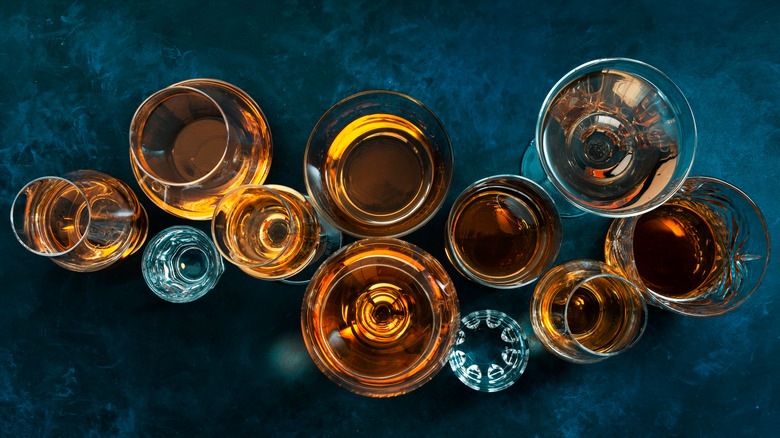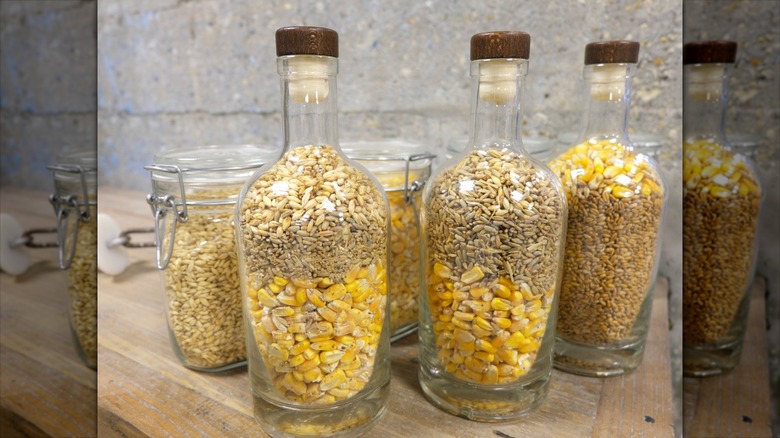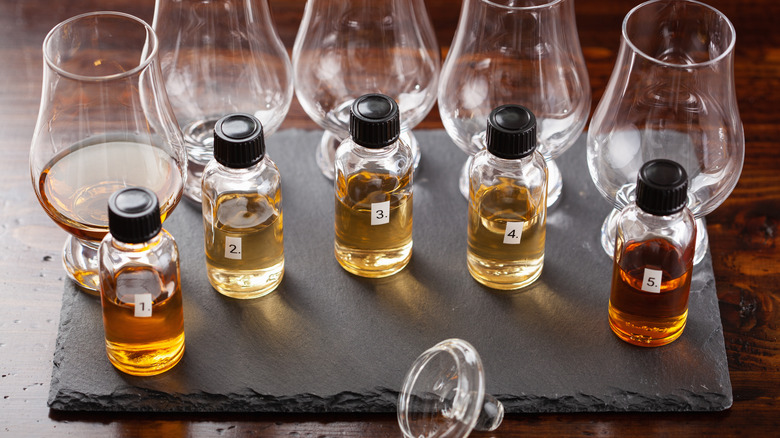Everything You Need To Know About New World Whiskey
Over recent years, the world of whiskey has been quickly expanding. Fans of the brown liquor likely know of the more traditional takes on the drink such as Scotch whisky, Irish whiskey, Bourbon, Rye whiskey and Japanese whisky just to name a few types (via Grim's Dyke). But there are so many more styles of whiskey that are being created year and year in non-traditional whiskey countries, like Bolivia, Russia, and South Africa, and by using new methods in traditional whiskey countries, like Ireland, Scotland, and the U.S. (via Master of Malt). It's these distilleries and master blenders who are building out the New World Whiskey category around the world.
Unlike traditional whiskies, New World Whiskey is not standardized across the globe, according to Master of Malt. While that opens up so many more options for those creating the alternative whiskies, it also means that whiskey drinkers might have more trouble finding one that they take to immediately. By understanding the specific approach a distillery takes to its own New World Whiskey, and therefore the characteristics and notes the whiskey will have, any aficionado can more easily decide if it is a good bottle to try.
What is New World Whiskey?
All whiskey, Old World and New World, is typically made by combining different types of grains, such as corn, barley, wheat, or rye, with water and yeast to ferment (via MasterClass). Once the mash, or the blend of these ingredients, has fermented, it can be distilled by heating and allowing the water to vaporize out of the liquid leaving behind the spirit. Once the spirit has been collected, the blender can then place it in different types of barrels to bring out notes in the whiskey as it ages.
Today, there are over 30 countries making whiskey (via Master of Malt). But what makes the products of these distilleries New World Whiskey is that the whiskey is far more representative of the local terroir reflected in the grain. According to The Flatiron Room, there are more than 5,500 varieties of barley available worldwide, although not all are used. By selecting local ingredients, such as different types of grains, the notes of the whiskey reflects its direct surroundings (via Club Oenologique). This means reviving heirloom grains and changing the type of wood the spirit is aged in can lend new qualities to the flavor of New World Whiskey.
Just as some distilleries use peat to fire the kilns used to dry barley to make peated whiskey, New World Whiskey makers can use a similar process to impart additional local influence (via VinePair). New World Whiskies are quintessentially made by breaking the Old World rules such as what ingredients can be used, in what proportions, and the alcohol by volume of the final product.
Notable New World Whiskies
Some countries that are far from Old World Whiskey countries include Taiwan, India, and Australia, per Master of Malt. Club Oenologique suggests New World Whiskey from France, Wales, and Tasmania. Of course, England and Ireland are just two Old World countries beginning to share space within the New World Whiskey category.
Australia's Starward single malt whiskey is aged in Australian Apera fortified wine barrels (via ReserveBar). The distillery's very first whisky, Solera, won two gold medals at the San Fransisco World Spirits Competition and won gold at the World Whiskies Awards in 2016, 2017, and 2019. Prices start at $76.99.
In Wales, Penderyn is distilling a selection of New World single malt whiskies, including their Penderyn Peated. The five-time gold winning whiskey is also quite affordable at just $39 per bottle (via The Whiskey Exchange).
French Malt Whisky Heritage by Alfred Giraud is aged in extra-old cognac barrels and has become another highly-lauded New World Whisky. It won gold twice at the San Francisco World Spirits Competition (via ReserveBar) and the limited-edition bottle starts at $179.
With so many countries and distilleries to choose from within the ever-growing New World Whiskey category, there are plenty of opportunities to learn and taste. Consider starting with a country that intrigues you and look for notable or popular distilleries making whiskies with flavor profiles you tend to enjoy. From there, you can easily branch out and look for bottles that fit your preferences.


